365 Urban Species. Species #037: European Beech
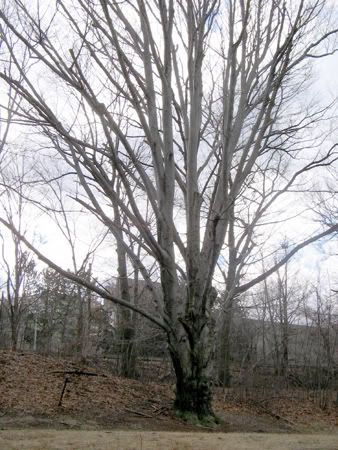
European Beech in the Riverway, Boston, February 2006.
Urban species#037: European beech Fagus sylvtica
While The Urban Tree Book says the beech is "usually an isolated specimen in town," in the town of Brookline and the areas in Boston that border it, there are dozens. In the mid 1800's local notable David Sears ordered over 5000 beeches from a Liverpool company. Most are gathered in a square called Longwood Mall, often called the largest grove of European beeches in North America (for whatever that's worth).

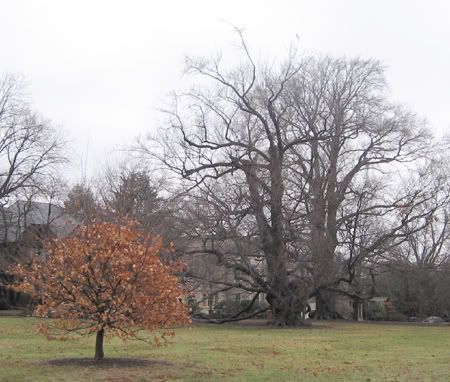
Young beeches often retain their leaves through winter.
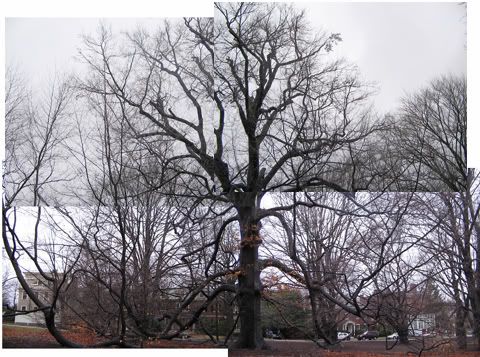
Branches that touch the ground re-root.
There are also several specimens dating from the same time on nearby streets in Brookline, as well as lining the Riverway (on the Boston side) and in the Mount Auburn Cemetery.
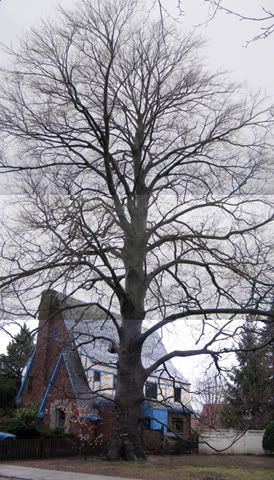
Brookline.
It's easy to see the appeal of the European beech. It's a magnificent spreading tree nearly 100 feet tall at maturity, whose branches bend to reach the ground, creating a shady enclosed space, well-suited to picnics. Depending on what the nursery specified, the foliage can be purple, copper, or rich green. The bark is cool, smooth, and gray, and when the tree is old is bears distinguished folds and wrinkles, like the enormous leg of a vegetable elephant.
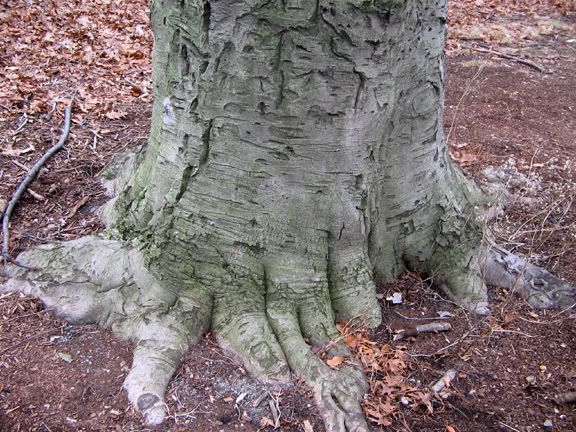
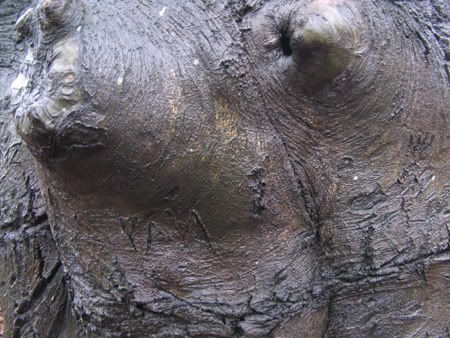
The bark is an irresistible temptation to vandals, whose decades-old scarifications can be seen smeared and elevated by the passing years. One wishes that lovers felt compelled to scratch a heart into the thin skin of a beech tree, that at least they would leave a date so that their disfigurements had historical value.
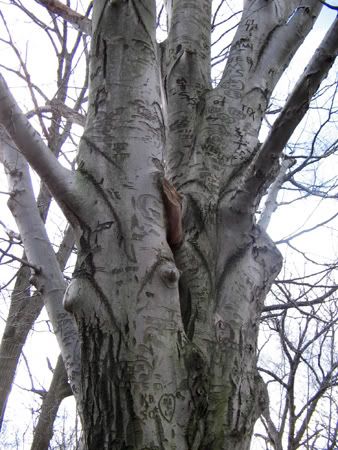
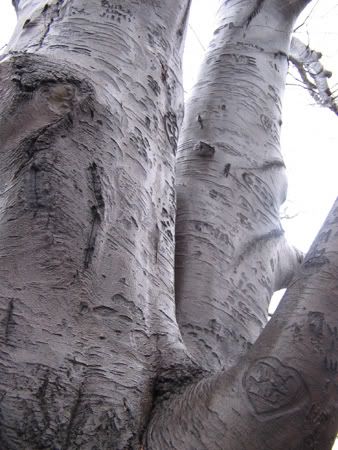
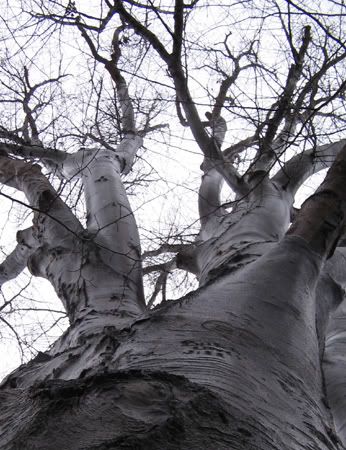
The native North American beech is Fagus grandifola, distinguished by lighter, less-wrinkled bark, and an ability to grow in warmer climates than the European species. American beech is more prone to suckering, a form of vegetative reproduction wherein new saplings sprout from the roots of the parent tree. This leads to forested areas where American beech trees thickly cluster into miniature groves.
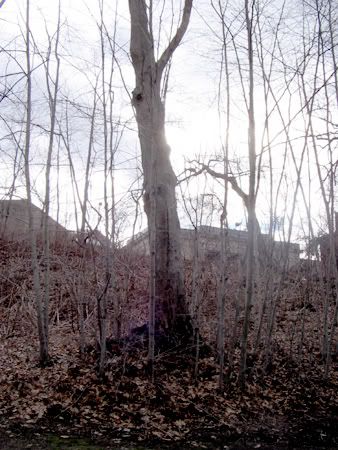
Beech trees are ecologically important on the east coast of North America. Beech nuts provide autumn and winter food for a vast variety of birds and mammals, including humans. European beech may have been introduced the British islands by prehistoric humans carrying beech nuts.